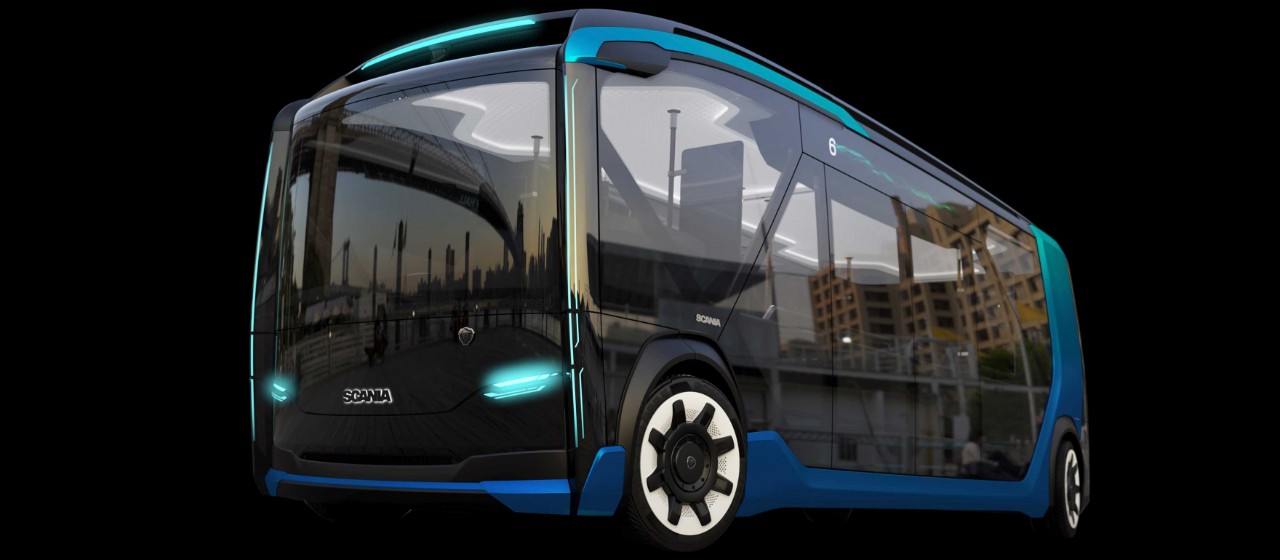
How our engineers designed a modular concept for 2030
10 JUNE 2019
What today is Scania’s NXT concept vehicle started with the idea of finding a solution for future transport in cities. A group of Scania engineers rose to the challenge by developing a vehicle that represents a vision of the future.
“When you ask ten different people about the future, you will get ten different answers. At the end of the day, no one knows what will happen in 2030,” says NXT Project Manager Robert Sjödin.
“Throughout this project, we have brought together experts and made many choices that have lead us to this idea of what the future of urban transport could be.”
Interchangeable functional modules
Scania has now revealed the result of its two-year future-oriented project – the eight-metre-long NXT concept vehicle. What sets the concept vehicle apart is the use of separate drive modules, which control and steer the vehicle, and functional modules, which can be used for different applications. Energy is stored in each functional module’s battery unit, meaning that, when transitioning between applications, each functional module can be removed and replaced by another with a fully charged battery.
Low weight
The bus module has the capacity for 20 seated passengers and 55 in total. Without a driver’s area, the entire interior area can be used to carry passengers.
The bus body consists of one single composite material module, reducing the total vehicle weight to less than eight tonnes.
Batteries under the floor
The cylindrical cell batteries – commercially available today – are placed under the bus floor and have a total capacity of 162 kWh. Combined with the low vehicle weight, simulations show that the vehicle can achieve a range of around 245 kilometres.
“Normally batteries are placed on the roof or in the engine compartment. Instead, we make good use what otherwise would be a dead space,” says Linus Ährlig, NXT Technical Project Manager, Scania. “This placement is also beneficial for weight distribution.”
Solar panels on the roof
For added power, the roof of the concept vehicle has been equipped with a limited number of solar panels. If the entire 20 m2 roof is covered with solar panels, this has the potential to generate nearly 3 kW of added power.
Crab steering mode
Ährlig continues: “Thanks to the hub engines and fully steered wheels, the concept vehicle is extremely agile on city streets. With crab steering mode, the front and rear wheels turn in the same direction. Crab steering enables the bus to align perfectly with the pavement for ease of passenger entry and exit.”
The axle distance of six metres is similar that of a standard bus. In contrast, however, the four fully steered wheels permit a turning radius of just 10.5 metres, better than many passenger cars.
Infrared heating system
Innovation has also been the guiding light inside the vehicle. To save on power-consuming heating, NXT has been equipped with an infrared heating system, which, compared with traditional convection heaters, reduces energy requirements by 60 percent. The system is substantially lighter as well. Rather than heating indoor air, the infrared heaters keep passengers warm while also warming seat fabrics for added comfort.